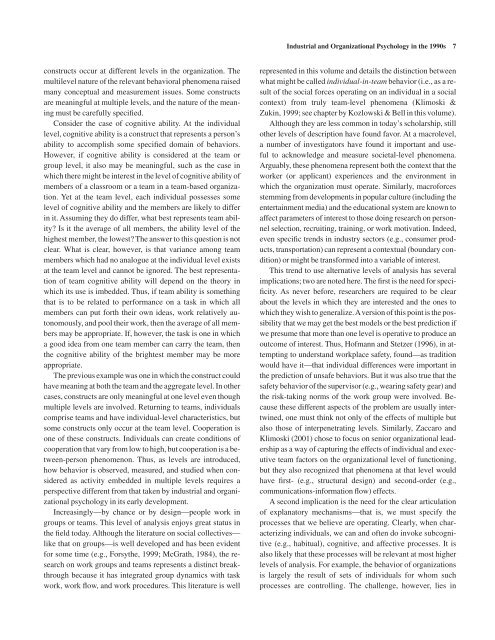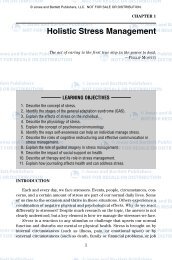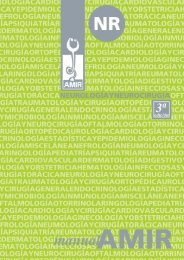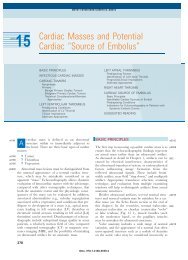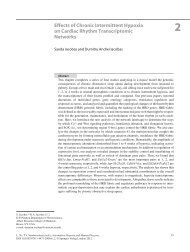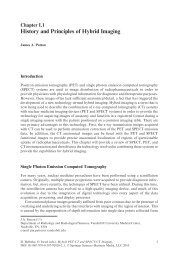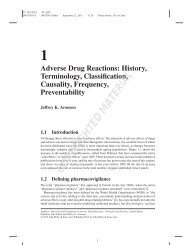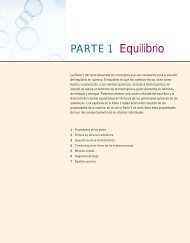Stability and Change in Industrial and Organizational ... - Axon
Stability and Change in Industrial and Organizational ... - Axon
Stability and Change in Industrial and Organizational ... - Axon
You also want an ePaper? Increase the reach of your titles
YUMPU automatically turns print PDFs into web optimized ePapers that Google loves.
orm_ch01.qxd 9/26/02 2:59 PM Page 7<br />
constructs occur at different levels <strong>in</strong> the organization. The<br />
multilevel nature of the relevant behavioral phenomena raised<br />
many conceptual <strong>and</strong> measurement issues. Some constructs<br />
are mean<strong>in</strong>gful at multiple levels, <strong>and</strong> the nature of the mean<strong>in</strong>g<br />
must be carefully specified.<br />
Consider the case of cognitive ability. At the <strong>in</strong>dividual<br />
level, cognitive ability is a construct that represents a person’s<br />
ability to accomplish some specified doma<strong>in</strong> of behaviors.<br />
However, if cognitive ability is considered at the team or<br />
group level, it also may be mean<strong>in</strong>gful, such as the case <strong>in</strong><br />
which there might be <strong>in</strong>terest <strong>in</strong> the level of cognitive ability of<br />
members of a classroom or a team <strong>in</strong> a team-based organization.<br />
Yet at the team level, each <strong>in</strong>dividual possesses some<br />
level of cognitive ability <strong>and</strong> the members are likely to differ<br />
<strong>in</strong> it. Assum<strong>in</strong>g they do differ, what best represents team ability?<br />
Is it the average of all members, the ability level of the<br />
highest member, the lowest? The answer to this question is not<br />
clear. What is clear, however, is that variance among team<br />
members which had no analogue at the <strong>in</strong>dividual level exists<br />
at the team level <strong>and</strong> cannot be ignored. The best representation<br />
of team cognitive ability will depend on the theory <strong>in</strong><br />
which its use is imbedded. Thus, if team ability is someth<strong>in</strong>g<br />
that is to be related to performance on a task <strong>in</strong> which all<br />
members can put forth their own ideas, work relatively autonomously,<br />
<strong>and</strong> pool their work, then the average of all members<br />
may be appropriate. If, however, the task is one <strong>in</strong> which<br />
a good idea from one team member can carry the team, then<br />
the cognitive ability of the brightest member may be more<br />
appropriate.<br />
The previous example was one <strong>in</strong> which the construct could<br />
have mean<strong>in</strong>g at both the team <strong>and</strong> the aggregate level. In other<br />
cases, constructs are only mean<strong>in</strong>gful at one level even though<br />
multiple levels are <strong>in</strong>volved. Return<strong>in</strong>g to teams, <strong>in</strong>dividuals<br />
comprise teams <strong>and</strong> have <strong>in</strong>dividual-level characteristics, but<br />
some constructs only occur at the team level. Cooperation is<br />
one of these constructs. Individuals can create conditions of<br />
cooperation that vary from low to high, but cooperation is a between-person<br />
phenomenon. Thus, as levels are <strong>in</strong>troduced,<br />
how behavior is observed, measured, <strong>and</strong> studied when considered<br />
as activity embedded <strong>in</strong> multiple levels requires a<br />
perspective different from that taken by <strong>in</strong>dustrial <strong>and</strong> organizational<br />
psychology <strong>in</strong> its early development.<br />
Increas<strong>in</strong>gly—by chance or by design—people work <strong>in</strong><br />
groups or teams. This level of analysis enjoys great status <strong>in</strong><br />
the field today. Although the literature on social collectives—<br />
like that on groups—is well developed <strong>and</strong> has been evident<br />
for some time (e.g., Forsythe, 1999; McGrath, 1984), the research<br />
on work groups <strong>and</strong> teams represents a dist<strong>in</strong>ct breakthrough<br />
because it has <strong>in</strong>tegrated group dynamics with task<br />
work, work flow, <strong>and</strong> work procedures. This literature is well<br />
<strong>Industrial</strong> <strong>and</strong> <strong>Organizational</strong> Psychology <strong>in</strong> the 1990s 7<br />
represented <strong>in</strong> this volume <strong>and</strong> details the dist<strong>in</strong>ction between<br />
what might be called <strong>in</strong>dividual-<strong>in</strong>-team behavior (i.e., as a result<br />
of the social forces operat<strong>in</strong>g on an <strong>in</strong>dividual <strong>in</strong> a social<br />
context) from truly team-level phenomena (Klimoski &<br />
Zuk<strong>in</strong>, 1999; see chapter by Kozlowski & Bell <strong>in</strong> this volume).<br />
Although they are less common <strong>in</strong> today’s scholarship, still<br />
other levels of description have found favor. At a macrolevel,<br />
a number of <strong>in</strong>vestigators have found it important <strong>and</strong> useful<br />
to acknowledge <strong>and</strong> measure societal-level phenomena.<br />
Arguably, these phenomena represent both the context that the<br />
worker (or applicant) experiences <strong>and</strong> the environment <strong>in</strong><br />
which the organization must operate. Similarly, macroforces<br />
stemm<strong>in</strong>g from developments <strong>in</strong> popular culture (<strong>in</strong>clud<strong>in</strong>g the<br />
enterta<strong>in</strong>ment media) <strong>and</strong> the educational system are known to<br />
affect parameters of <strong>in</strong>terest to those do<strong>in</strong>g research on personnel<br />
selection, recruit<strong>in</strong>g, tra<strong>in</strong><strong>in</strong>g, or work motivation. Indeed,<br />
even specific trends <strong>in</strong> <strong>in</strong>dustry sectors (e.g., consumer products,<br />
transportation) can represent a contextual (boundary condition)<br />
or might be transformed <strong>in</strong>to a variable of <strong>in</strong>terest.<br />
This trend to use alternative levels of analysis has several<br />
implications; two are noted here. The first is the need for specificity.<br />
As never before, researchers are required to be clear<br />
about the levels <strong>in</strong> which they are <strong>in</strong>terested <strong>and</strong> the ones to<br />
which they wish to generalize.Aversion of this po<strong>in</strong>t is the possibility<br />
that we may get the best models or the best prediction if<br />
we presume that more than one level is operative to produce an<br />
outcome of <strong>in</strong>terest. Thus, Hofmann <strong>and</strong> Stetzer (1996), <strong>in</strong> attempt<strong>in</strong>g<br />
to underst<strong>and</strong> workplace safety, found—as tradition<br />
would have it—that <strong>in</strong>dividual differences were important <strong>in</strong><br />
the prediction of unsafe behaviors. But it was also true that the<br />
safety behavior of the supervisor (e.g., wear<strong>in</strong>g safety gear) <strong>and</strong><br />
the risk-tak<strong>in</strong>g norms of the work group were <strong>in</strong>volved. Because<br />
these different aspects of the problem are usually <strong>in</strong>tertw<strong>in</strong>ed,<br />
one must th<strong>in</strong>k not only of the effects of multiple but<br />
also those of <strong>in</strong>terpenetrat<strong>in</strong>g levels. Similarly, Zaccaro <strong>and</strong><br />
Klimoski (2001) chose to focus on senior organizational leadership<br />
as a way of captur<strong>in</strong>g the effects of <strong>in</strong>dividual <strong>and</strong> executive<br />
team factors on the organizational level of function<strong>in</strong>g,<br />
but they also recognized that phenomena at that level would<br />
have first- (e.g., structural design) <strong>and</strong> second-order (e.g.,<br />
communications-<strong>in</strong>formation flow) effects.<br />
A second implication is the need for the clear articulation<br />
of explanatory mechanisms—that is, we must specify the<br />
processes that we believe are operat<strong>in</strong>g. Clearly, when characteriz<strong>in</strong>g<br />
<strong>in</strong>dividuals, we can <strong>and</strong> often do <strong>in</strong>voke subcognitive<br />
(e.g., habitual), cognitive, <strong>and</strong> affective processes. It is<br />
also likely that these processes will be relevant at most higher<br />
levels of analysis. For example, the behavior of organizations<br />
is largely the result of sets of <strong>in</strong>dividuals for whom such<br />
processes are controll<strong>in</strong>g. The challenge, however, lies <strong>in</strong>


